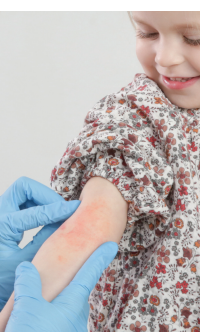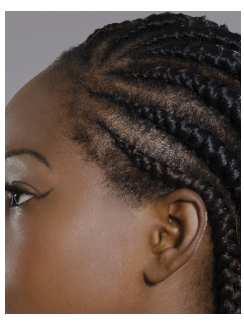By Ted Rosen,MD, FAAD,Editor-in-Chief
COVID-19

A large-scale survey of AAD members indicated that use of TELEDERMATOLOGY among respondents went from 14.1% pre-pandemic to 96.9% during the pandemic. Live interactive was the most common modality, although survey respondents felt the combination of video with store-and-forward photographs was the most accurate. Over 80% felt that inadequate reimbursement was the single greatest barrier to use and continuation of teledermatology. Nonetheless, 58% definitely plan to continue utilizing teledermatology.
TO READ MORE: Kennedy J, et al. Dermatologist Perceptions of Teledermatology Implementation and Future Use After COVID-19: Demographics, Barriers, and Insights. JAMA Dermatol. 2021;157(5):595-597.
A recent study involving the sera collected from individuals who were 2 or 4 weeks after their second PFIZER COVID-19 VACCINATION showed neutralization capacity against a number of the newer COVID-19 viral variants, including several from India.
TO READ MORE: Liu J, et al. BNT162b2-elicited neutralization of B.1.617 and other SARS-CoV-2 variants. Nature. 2021, June 10. doi: 10.1038/s41586-021-03693-y.
_____________________________________________________________________________________
PEDIATRIC DERMATOLOGY
An Italian study showed that, among pediatric patients with Type 1 diabetes, there was about an 8% prevalence of PSORIASIS. This is 4 times the prevalence of psoriasis in the general Italian pediatric population. An etiologic link might be the elevated levels of IL-17 found in Type 1 diabetic serum, as the TH17 pathway is well known to be intimately involved with psoriasis. (Editor’s note: This needs to be repeated in other countries.)

TO READ MORE: Caroppo F, et al. Prevalence of psoriasis in a cohort of children and adolescents with type 1 diabetes. J Eur Acad Dermatol Venereol. 2021; Apr 29. doi: 10.1111/jdv.17318.
Analysis of 2074 children aged 2-17 who had completed 10 years of participation in the Pediatric Eczema Elective Registry disclosed that those with more severe ATOPIC DERMATITIS were more likely to be diagnosed with a learning disability, independent
of socioeconomic factors. This suggests that children with more severe atopy should be monitored and screened for learning difficulties so that appropriate interventions can be instituted.
TO READ MORE: Wan J, et al. Association of atopic dermatitis severity with learning disability in children. JAMA Dermatol. 2021;157(6):651-57.
PSORIASIS
Using several large insurance databases, including over 123,00 psoriasis or psoriatic arthritis patients, investigators concluded that treatment with USTEKINUMAB was associated with a 1.4-3.0 times lowered risk of hospitalization due to serious infection when compared to other biologic agents and apremilast. Apart from ustekinumab, other drugs received by patient in this study included the following: adalimumab, apremilast, certolizumab, etanercept, golimumab, ixekizumab, and secukinumab.
TO READ MORE: Jin Y, et al. Risk of hospitalized serious infection after initiating ustekinumab or other biologics for psoriasis or psoriatic arthritis. Arth Care Res. 2021; May 10; doi: 10.1002/acr.24630.
ATOPIC DERMATITIS/ECZEMA
______________________________________________________________________________________________________________________________
Two cases of RECALCITRANT DYSHIDROTIC ECZEMA were successfully managed with dupilumab 300mg every other week. This adds to the growing body of literature endorsing the use of this biologic drug in this particular off-label manner.

TO READ MORE: Gall RA. Two cases of recalcitrant dyshidrotic eczema treated with dupilumab. J Drugs Dermatol. 2021;20(5):558-559.
Studies evaluating Investigator Global Assessment, improvement in EASI score, and reduction of itch showed major benefit with both 2mg and 4mg daily doses of the selective JAK INHIBITOR BARICITANIB. Benefit persisted 32-68 weeks into the studies.
TO READ MORE: Silverberg JI, et al. Long-term efficacy of baricitinib in adults with moderate to severe atopic dermatitis who were treatment responders or partial responders: an extension study of 2 randomized clinical trials. JAMA Dermatol. 2021Jun 1;157(6): 691-699.doi: 10.1001/jamadermatol.2021.1273.
HAIR AND NAILS
______________________________________________________________________________________________________________________________

There is an art to taking a history and doing an appropriate examination when dealing with HAIR LOSS in those with tightly coiled hair. The Editor suggests carefully reading through this short, pearl-filled manuscript: Grayson C and Heath C. An approach to examining tightly coiled hair among patients with hair loss in race-discordant patient-physician interactions. JAMA Dermatol. 2021;157(5):505-506.
Aside from hairstyle modification, all of the following—alone or in combination— may be beneficial in the treatment of traction-induced alopecia: topical steroids, topical minoxidil (5% recommended), topical 1% clindamycin, intralesional triamcinolone (2.5-5.0mg/ml dilution), oral tetracycline derivatives (tapered to sub-antimicrobial doses), and hair transplantation.
TO READ MORE: Aktintilo L, et al. Management of traction alopecia: our experience
and a brief review of current literature recommendations. J Drugs Dermatol.
2021;20(5):578-579.
CUTANEOUS ONCOLOGY, SURGERY, AND LASERS
_____________________________________________________________________________________________________________________________
A decade-long Kaiser Permanente cohort study included over 220,000 adult patients with and without ACTINIC KERATOSIS within 2 years of study initiation. The risk of development of cutaneous squamous cell carcinoma (cSCC) increased each year, but at a faster rate in those with actinic keratosis. At 10 years, the cumulative incidence of cSCC was 17.1% in AK patients compared to 5.7% in control patients.
The cumulative incidence of cSCC was 17.1% 5.7% in ak patients in control patients
Other specific factors associated with cSCC development included older age, Caucasian race, and male gender.
TO READ MORE: Madani S, et al. Ten-year follow-up of persons with sun-damaged skin associated with subsequent development of cutaneous squamous cell carcinoma. JAMA Dermatol. 2021;157(5):559- 565. doi: 10.1001/jamadermatol.2021.0372.
Surgical excision remains the treatment of choice for IN-TRANSIT METASTATIC MALIGNANT MELANOMA. However, multiple or widespread lesions may preclude this approach. The authors successfully managed such a case with the following combination: deep shave removal, followed by electrodesiccation and curettage, followed by 3 months daily application of 5% imiquimod cream.
TO READ MORE: Globerson JA. Novel treatment of in-transit metastatic melanoma with shave excision, electrodesiccation and curettage, and topical imiquimod 5% cream. J Drugs Dermatol. 2021;20(5):555-557.
______________________________________________________________________________________________________________________________
Wide local excision of EXTRAMAMMARY PAGET’S DISEASE is associated with 20-60% recurrence rates. Mohs micrographic surgery reduces that recurrence rate dramatically (approximately 3.3%) when utilized with intraoperative CK7 staining. The latter allows for identification of atypical subclinical finger-like tumor extension, which might otherwise be missed.

TO READ MORE: Kim EY, et al. Bilateral contiguous scrotal extramammary paget’s disease treated with mohs micrographic surgery and CK7 immunohistochemical staining. J Drugs Dermatol. 2021;20(5):565-566.

COMMON CUTANEOUS MALIGNANCIES may pose a logistical problem in the oldest of old patients. In a study of 61 patients aged 92-104, electrochemotherapy with bleomycin (under regional or local anesthesia) provided complete response in about 60% and local control over a year in about 80%.
TO READ MORE: Sersa G, et al. Outcomes of older adults aged 90 and over with cutaneous malignancies after electrochemotherapy with bleomycin: a matched cohort analysis from the InspECT registry. Eur J Surg Oncol. 2021;47(4):902-912.
A case of MULTICENTRIC RETICULOHISTIOCYTOSIS demonstrated remarkable response to treatment with the JAK-1 inhibitor, upadacitinib, following failure of prednisone, hydroxychloroquine, methotrexate, and infliximab.
TO READ MORE: Niaki OZ, et al. Treatment of severe multicentric reticulohistiocytosis with upadacitinib. JAMA Dermatol. 2021;157(6):735-737.
HIDRADENITIS SUPPURATIVA
______________________________________________________________________________________________________________________________

While absenteeism is a known concomitant of active hidradenitis suppurativa (HS), DECREASED PRODUCTIVITY WHILE AT WORK has not previously been explored. This study, involving 523 working HS patients, indicated that about 20% were considerably less productive compared to a time when they were working without active HS. Factors that were associated with reduced productivity included the following: inguinal and gluteal disease, more severe disease, greater pain, and higher rates of anxiety or depression.
TO READ MORE: van Straalen KR, et al. Impact of hidradenitis suppurativa on work productivity and associated risk factors. J Am Acad Dermatol. 2021;84(5):1401-1405.
ACNE
_________________________________________________________________________________________
Due to its ability to reduce cytokine synthesis and release, modest antibacterial properties, and ability to suppress habitual behaviors (such as picking), N-ACETYLCYSTEINE may be beneficial in some cases of acne vulgaris.
TO READ MORE: Mardani N, et al. A systematic review of n-acetylcysteine for treatment of acne vulgaris and acne-related associations and consequences: focus on clinical studies. Dermatol Ther. 2021. May;34(3):e14915. doi: 10.1111/dth.14915.
______________________________________________________________________________________________________________________________
Post-hoc analysis of pivotal trial data indicates that the new TAZAROTENE formulation (0.045% lotion) is effective across both adolescent and adult age groups, as well as both sexes. There was a tendency for more irritation among female study participants.
TO READ MORE: Green LJ, et al. Tazarotene 0.045% lotion for moderate-to-severe acne patients: pooled phase 3 analysis by age and sex. J Drugs Dermatol. 2021;20(6):608-615.
______________________________________________________________________________________________________________________________
Post-hoc analysis of pivotal trial data indicate that SARECYCLINE (1.5mg/kg/day for 12 weeks) showed IGA efficacy rates for truncal acne (chest and back) significantly better than placebo. This parallels the benefit previously reported for facial acne.

TO READ MORE: Del Rosso JQ, et al. Management of truncal acne with oral sarecycline: pooled results from two phase-3 clinical trials. J Drugs Dermatol. 2021; 20(6):634-640.
GENERAL DERMATOLOGY
_____________________________________________________________________________________________________
CUTANEOUS METASTASES from internal malignancy may assume unusual morphologies. In this case, cutaneous metastasis from sigmoid adenocarcinoma closely mimicked erythema ab igne.
TO READ MORE: Alhuzimi AM, et al. Erythema ab igne masking cutaneous metastasis of colorectal adenocarcinoma. Dermatol Reports. 2021. Mar 18; 13(1): 9079.
doi: 10.4081/dr.2021.9079
Using information from a 2-year sample of the U.S. nationwide Optum Database, the authors found the annualized incidence and prevalence of GRANULOMA ANNULARE to be 0.04% and 0.06%, respectively. These are relatively low incidence and prevalence estimates. Women outnumbered men by a 3-to-1 ratio.
TO READ MORE: Barbieri JS, et al. Incidence and prevalence of granuloma annulare in the United States. JAMA Dermatol. 2021;June 9. doi:10.1001/jamadermatol.2021.1847


